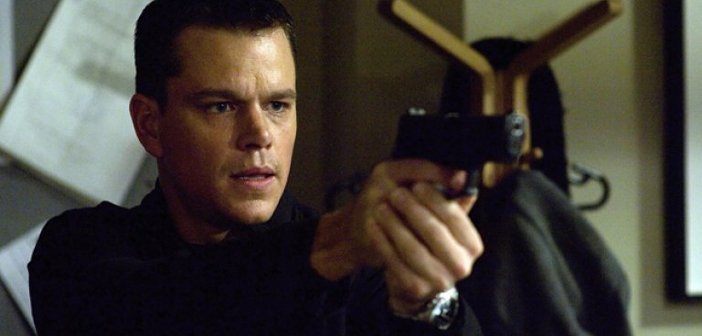The Spy Thriller Re-Bourne: The Bourne Identity 15 Years On
At one time Jason Bourne was the man standing over the long-prophesied grave of the Bond franchise, a grave critics everywhere considered to have been finally filled-in by Bourne. Now though, his fortunes have turned. While James is still running about in perhaps not his most critically healthy of states, most have resigned themselves to his inability to be killed.
Jason however seems to have finally been served his burn notice after a middlingly-received soft-reboot and largely ignored sequel bringing Damon back to the role. These days the legacy of Bourne (geddit?) is as patient zero for the gritty, depressing tone our once fun spy movies must take while also being blamed as the plague-bearing ship that inflicted unwatchable shaky-cam directing and millisecond-long-cuts editing upon our once fair lands. With that in mind let’s take a step back in time to 2002: phones were getting smarter, dial-up was still the norm for most and the president of the US was a war-mongering conservative man-child (…oh, wait) — most importantly for our present purposes though, The Bourne Identity was released.
Now, the first thing to note is that all the above criticisms of this franchise are true and valid, Paul Greengrass has a lot to answer for. However, the oft-forgotten piece of movie-quiz trivia is that Greengrass came later, as this first installment was directed by Doug Liman, and thus is essentially plague-free. For one, there aren’t nearly as many action scenes as the later films have, and when they do arrive they are cleanly choreographed, well-framed and, while edited with an undeniable kineticism, they are still a world apart from the disorienting mess Greengrass and his later imitators would devolve the style into. It remains well-judged here and the techniques lend the action an urgency and intensity which even fifteen years later is effective. Many modern action films could still learn a lesson from this first Bourne.

It’s also a more visually accomplished film than the series’ sequels would imply. There’s some quite striking cinematography and shot compositions in the first half, with Bourne as an isolated figure in the frame. They’re genuinely pretty shots and neatly emphasise just how vulnerable a character he is. While he’s an unstoppable killing machine, this film goes to lengths to demonstrate that he’s effectively a scared child at the heart of it. This was the main element other franchises decided to steal going forward and likely the reason why Ethan Hunt got married, and Bond has spent the last decade staring down the barrel of his own self-loathing and inhumanity. It’s an interesting and compelling angle to take in a big-budget spy/action film but was never necessarily one which every film in the genre had to adopt.
You’ll note the emphasis on “first half” in the above paragraph. It’s a film I suspect most people assume ends around the (deservedly) iconic Paris car chase. Upon rewatching it, I myself was surprised at that juncture to see a sizeable chunk of film remaining before we get to the famous Moby song, which the franchise’s credits have become synonymous with. And that’s a key issue, there are not-insubstantial lumps of this film that are quite forgettable, including practically all of the third act. This is because the film is at its strongest when focusing on Jason trying to work out who he is and what’s happening. Every scene with him and Marie hanging out, following clues and furthering the plot with amusing and genuinely clever little sequences of lowkey espionage business are a delight. The film almost feels like modernised Hitchcock tale during these sections of the film. Unfortunately the film is equally preoccupied with Treadstone, the shady government program which the franchise increasingly leaned on for plots, and it’s ultimately these scenes which bog the film down.
[arve url=”https://www.youtube.com/watch?v=ypt3XtV6od4" maxwidth=”750"]
The Treadstone plot serves a purpose and without its early scenes to explain what’s really going on to the audience — and putting them ahead of the protagonist — it’s not hard to imagine many would have lost patience with the slowburn nature of Bourne’s discoveries. Nonetheless it does demystify the intrigue of the setup unforgivably soon and once Bourne and Marie have escaped Paris, the film puts her on a bus and just focuses on Treadstone (a microcosm for the rest of the franchise going forward). At this point the whole affair becomes “just a movie”; a well shot, acted and staged one, but nothing particularly interesting or engaging. A ninety-minute character piece which cut out all but the bare minimum necessary Treadstone scenes while retaining the action and thus foregrounding the Jason/Marie relationship and investigation scenes would have led to a more memorable and consistent film. Sadly, that’s not what we have.
The ultimate value of the film is in examining its entrails and the effect they had on filmmaking since, because as is, you’re looking at an uneven action film from the early noughties with moments that imply it could have been a classic. However, it’s ultimately hampered by its own plot and dated elements. And nowhere is that datedness more present than aurally. We’ll leave aside the punching sounds which may as well be from Indiana Jonesm but it’s music is a very rough road indeed. John Powell’s main theme and incidental cues are still as memorable and hummable as they were then, but the affliction of late-nineties/early-noughties club-style music is a persistent threat, culminating in the car chase which forgoes all pretense and just uses a Paul-bloody-Oakenfold track. A timeless spy thriller it does not make.

